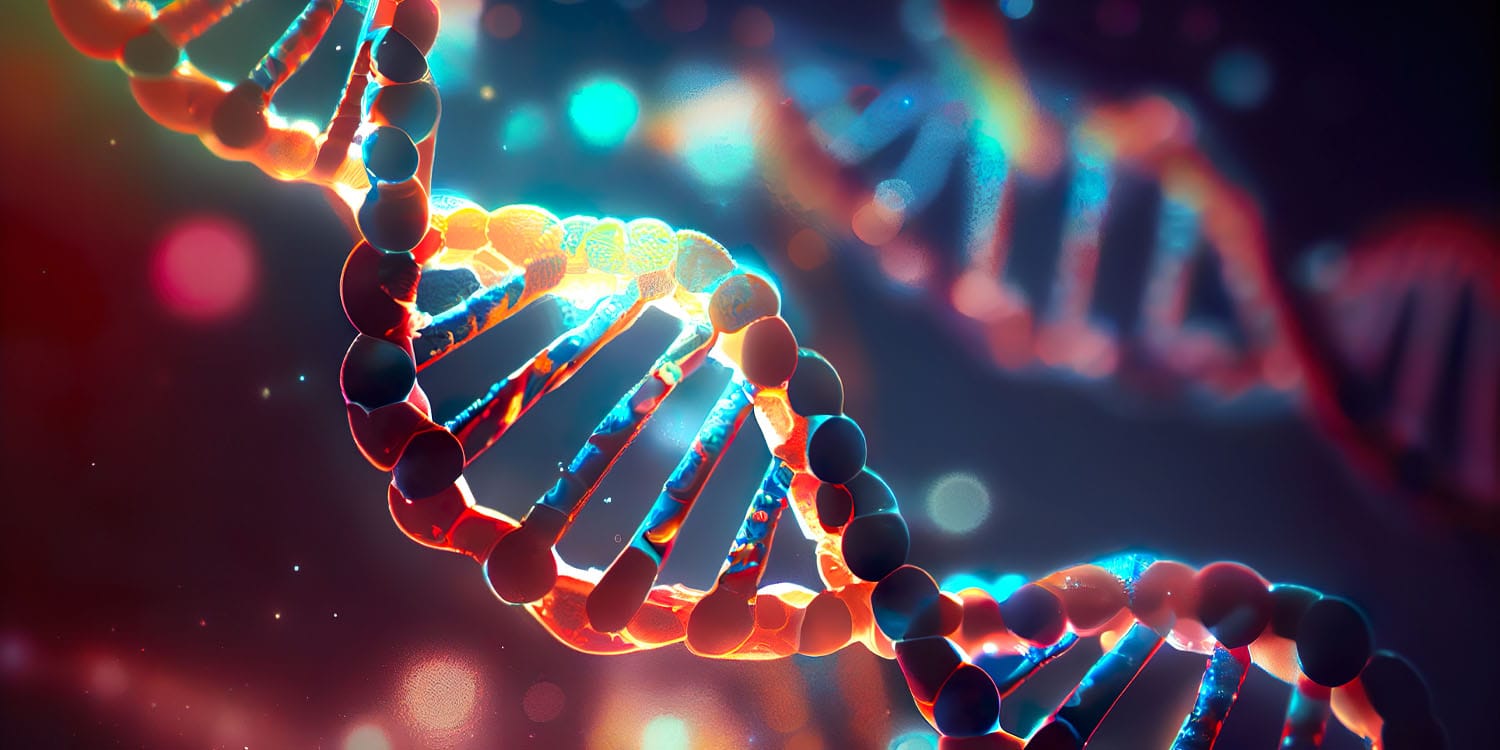Autism spectrum disorder has long been known to affect more boys than girls. But why this difference exists has remained a puzzle. A new study out of Sweden may provide some answers, suggesting that the underlying genetic factors contributing to autism might vary between boys and girls.
The study, published in JAMA Psychiatry, found that heritability — the proportion of variation in a trait attributable to genetic differences — was significantly higher in boys than in girls. This finding points to the possibility that boys and girls might develop autism through different genetic pathways.
Autism spectrum disorder is a complex neurodevelopmental condition characterized by challenges in social communication, repetitive behaviors, and often a range of other cognitive and sensory sensitivities. The term “spectrum” reflects the wide variety of symptoms and severity that can manifest in individuals with the disorder.
Some people with autism may have exceptional abilities in areas like music, art, or mathematics, while others may have significant difficulties in daily functioning. The exact causes of autism remain largely unknown, but it is widely accepted that both genetic and environmental factors play a role in its development.
The motivation behind the study stems from a long-standing observation that autism is more commonly diagnosed in boys than in girls, with boys being about four times more likely to receive a diagnosis. This significant difference in prevalence between the sexes has puzzled researchers for years.
Previous research has proposed various theories to explain this sex difference, including the female protective effect, which suggests that girls might need a higher genetic burden to develop autism spectrum disorder. Another theory, the greater genetic variability in males, posits that boys might be more susceptible to developing the disorder due to their broader genetic diversity. The study was motivated by a desire to test these theories.
“The causes of autism remain unknown, but genetic causes, inherited directly from the parents, also play a major role. No single gene can explain autism, but the disorder is believed to be influenced by multiple genes (polygenic) and often interacts with environmental factors. A key feature of autism is the skewed sex ratio, with a significantly higher risk for boys. However, it is unclear why males are more likely to be diagnosed than females,” said study author Sven Sandin, an associate professor at Icahn School of Medicine at Mount Sinai and a senior researcher at the Karolinska Institutet.
“One way to understand the sex difference is through differences in genetic variance – a model that has rarely been considered and that we tested in the current study using epidemiological methods. This model suggests that males have higher genetic variance than females, meaning that more males than females are randomly exposed to a higher genetic load. This could explain why males are more likely to be diagnosed with autism than females without invoking the female protective effect (FPE), a more commonly used theory to explain the skewed ratio in autism. According to FPE, females are more resilient than males and can withstand a higher genetic burden before being diagnosed. However, results from previous studies have shown inconsistent findings regarding the FPE, including a recent study we conducted.”
“Finding a useful biological model to explain sex differences in risk is critical to understanding the underlying biological mechanisms that lead to the development of sex-specific prevention strategies and treatments,” Sandin explained. “By better understanding the biological basis for sex differences in disease, we can also work to reduce health disparities between men and women. It can also help guide research into the development of sex-specific animal models to improve the translation of research findings to humans.”
“Thus, a biological model that explains sex differences in disease risk is essential for advancing health care, reducing health disparities, and advancing our knowledge of human biology.”
To conduct this study, the researchers analyzed data from an extensive population-based registry in Sweden. The study included over 1 million children born between 1985 and 1998, all of whom were followed until they reached 19 years old. By focusing on a large cohort, the researchers aimed to generate more reliable estimates of heritability for both boys and girls. Importantly, they restricted the sample to children born to Swedish parents and excluded twins, as twins present additional complexities in genetic studies due to their shared genetic makeup.
Autism spectrum disorder diagnoses were identified through Sweden’s National Patient Register, which includes comprehensive records of all inpatient and outpatient diagnoses since 1987. Diagnoses were made based on standardized assessments conducted at regular medical and developmental check-ups. The researchers then calculated heritability using statistical models that considered both genetic and environmental factors.
The findings revealed that the heritability of autism was about 87% in boys, compared to approximately 76% in girls. This difference of 11% between the sexes is statistically significant and suggests that genetic factors play a more substantial role in the development of autism in boys than in girls. The researchers believe that these results could indicate different underlying causes for the disorder between the two sexes, with boys possibly being more vulnerable to genetic risk factors.
“We expected to see a greater difference in heritability between males and females with autism, as we expected non-additive genetic factors, such as gene-gene interactions or epigenetic modifications, to be more influential in females than in males,” Sandin told PsyPost. “However, our results suggest that additive genetic factors, such as single nucleotide variants, are still the major contributors to autism risk in both sexes, accounting for about 75% of the variance in females and 87% in males.”
The study’s results are significant because they challenge the prevailing notion that autism has the same genetic basis in boys and girls. The fact that heritability is higher in boys suggests that the genetic architecture of autism might differ by sex. This could mean that different genetic variants or combinations of variants are responsible for the development of the disorder in boys and girls.
“The study is a step forward in understanding autism risk and guiding future research on sex differences in autism risk,” Sandin said, noting that “the study does not provide information about individual risk.”
Despite the study’s strengths, including its large sample size and population-based design, there are some limitations to consider. The study only included children of Swedish origin, which may limit the generalizability of the findings to other populations. Additionally, the study did not account for all possible environmental factors that could influence the development of autism, such as prenatal exposure to toxins or early-life stressors. While the researchers adjusted for certain variables, such as parental age, there may still be unmeasured factors that could affect the results.
“A single study, no matter how large or well done, cannot provide incontrovertible evidence,” Sandin said. “Therefore, this study must be replicated using data from other health systems and populations.”
Future research could build on these findings by exploring the specific genetic variants that contribute to the development of autism in boys and girls. Additionally, studies could investigate whether different environmental factors interact with genetic risk factors to influence the development of the disorder in each sex. Understanding these interactions could help identify more targeted interventions and treatments for autism, tailored to the unique genetic and environmental profiles of boys and girls.
The study also raises questions about the clinical implications of the findings. If boys and girls have different genetic pathways leading to autism, this could have implications for diagnosis and treatment. For example, it is possible that the current diagnostic criteria, which are based primarily on studies of boys, may not fully capture the way autism manifests in girls. This could lead to underdiagnosis or misdiagnosis of girls with the disorder. Further research could help refine diagnostic criteria to better account for these potential differences.
“Our long-term goal is to improve the understanding of the causes of autism to a level that will help families, affected individuals and clinicians to better understand the underlying causes,” Sandin said. “This can reduce emotional distress and stigma in society and potentially lead to improved treatment and intervention for groups of individuals with autism. To this end, we are using autism diagnoses and health, medical, family and demographic data from the large national registers in the Nordic countries. Examples of such studies include the risk associated with preterm birth and maternal conditions.”
“This type of research relies on the availability of reliable data and modern epidemiological and statistical methods, applied by a large international network of experts in different fields, and can only be carried out with significant funding.”
The study, “Examining Sex Differences in Autism Heritability,” was authored by Sven Sandin, Benjamin H. K. Yip, Weiyao Yin, Lauren A. Weiss, Joseph D. Dougherty, Stuart Fass, John N. Constantino, Zhu Hailin, Tychele N. Turner, Natasha Marrus, David H. Gutmann, Stephan J. Sanders, and Benjamin Christoffersson.




